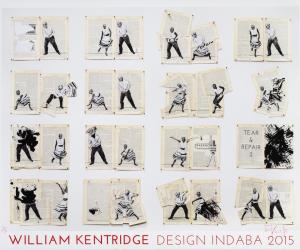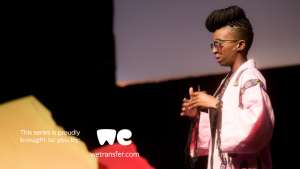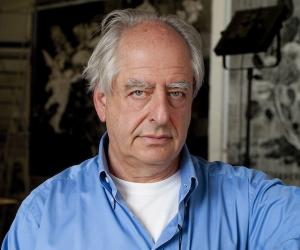Part of the Project
The beauty of being able to watch the full talks from Design Indaba Conference at your own pace is demonstrated beautifully in this performance-lecture by William Kentridge. It is a rich and complex foray into his creative process, during which he both talks about – and demonstrates on stage – the power of association and creative thinking. Watching the talk on video is a rare opportunity to unpack what Kentridge is saying – and offers a ticket to understanding how he conceives and constructs all his artistic output.
At first listen, Kentridge’s lecture may sound like an exercise in surrealist word association, so intricate and multi-layered that you sense the meaning is in there somewhere, if only you could dig your way through. But listen slowly; pause, rewind and listen again; and his points become thrillingly clear.
I am trying to follow the thoughts wherever they go and resist the attempts to make an argument, Kentridge says.
He describes his studio space in Johannesburg – the context and surroundings that influence his train of thought while he works. The drawings of peonies in a vase, paintings of birds, a tree in the garden are stimuli that set off a host of memories and sensations that invade his thoughts. They are “reminders of the things you are not focussed on”. They make up a peripheral vision that is akin to peripheral thoughts. Paying attention to these is what ignites his creative process.
“Let it be said that focussing on a single thought is not something I am very good at but I have to try to rescue this shifting of attention,” he admits. “I latch onto any stray thought that can put off the idea of having to think coherently about what must be said today,” he says in reference to the lecture he is giving.
“A kind of procrastination but a productive procrastination I hope nonetheless.”
He traces his associations of looking at a tree – a white stinkwood in his garden – to illustrate “the porousness of focus”.
Every encounter in the world is a mixture between that which the world brings towards us – the tree – and that which we project onto it.
“A tree is never just itself.”
Kentridge then shows how this associative way of working applied to his upcoming exhibition in Beijing, Notes Towards a Model Opera. His starting points were Chinese revolutionary posters with their proletarian slogans and the propagandist operas produced during China’s Cultural Revolution. This was followed by improvisations with longtime collaborator and dancer Dada Masilo combining Chinese models of dance with African performance.
Watch through to the end for a final, aural (and visual) treat. Kentridge invites the team of musicians from his opera Refuse the Hour onto the stage for a giant practice session where they test some ideas for his Beijing production of Notes Towards a Model Opera, including projections of Masilo dancing and animated drawings by Kentridge.













